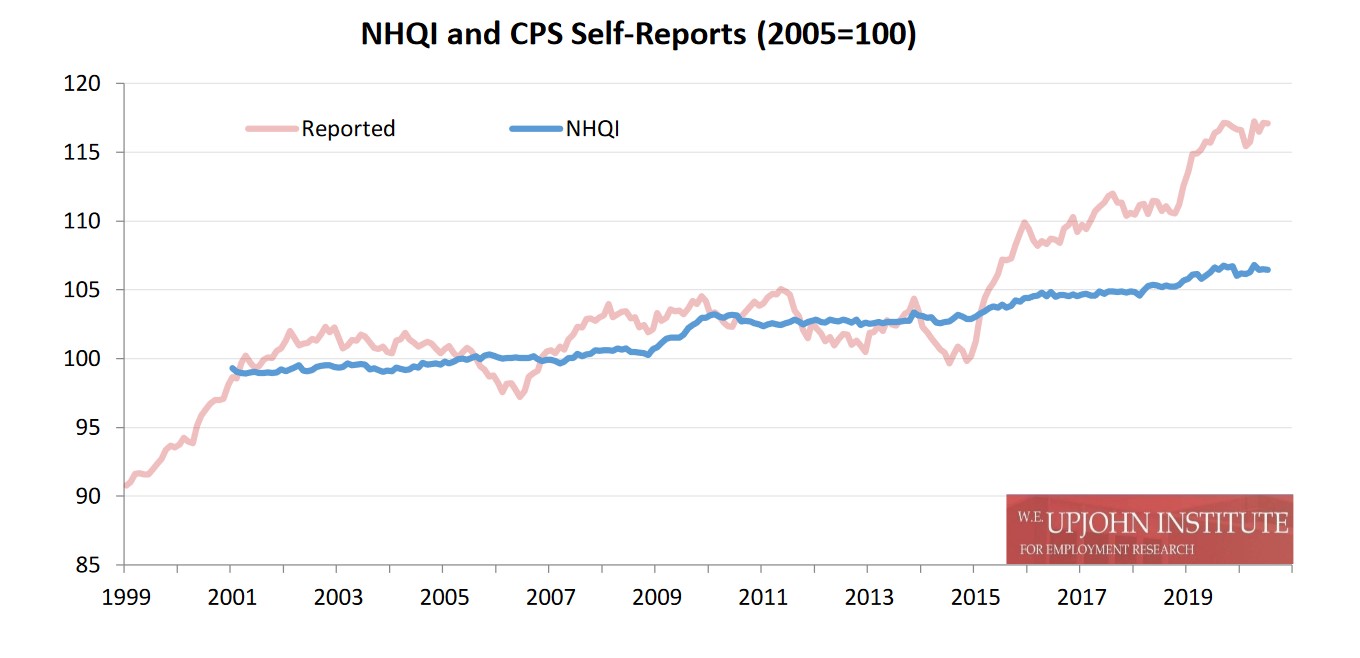
The Upjohn Institute New Hires Quality Index for July 2020 shows the inflation-adjusted earnings power of people starting a new job unchanged from June and down 0.2 percent from the previous year, to $17.14. The index has changed little since last summer, even during this year’s pandemic job losses and rehiring.
Each year, around Labor Day, Index creator Brad Hershbein examines trends in actual, reported wages of newly hired workers and compares these with the NHQI, which uses occupational and demographic characteristics as a proxy for the earnings power of newly hired workers. Over the last year, real wages grew 0.6 percent, while the NHQI wage index fell 0.2 percent.
The difference shows that real wage growth, controlling for occupations and demographics, is up 0.8 percent. Although the increase is substantially smaller than the previous year’s, people with the same type of skills, doing the same type of work, are getting paid more.
This growth doesn’t show up equally across the wage distribution, however. Over the past year, growth has been stronger at the bottom, with 10th percentile wages up 4 percent, 25th percentile wages up 6.4 percent and median wages up 7.1 percent. In contrast, 90th percentile wages are actually down 4.3 percent.
Taken together, these indicate a slight narrowing in earnings inequality among new hires, although a huge gap remains between the highest earners and the median.
Details are in this month’s special news release.
